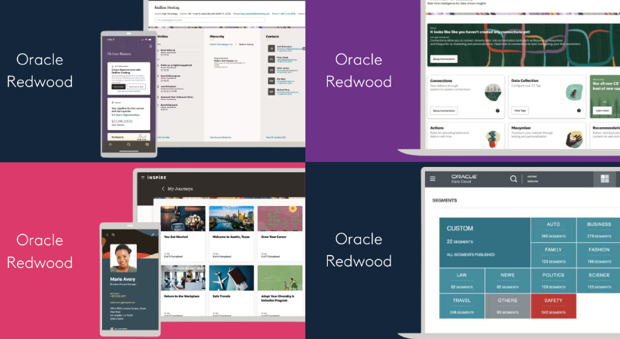Today, employees' expectations of digital experiences are set by such consumer-grade applications – which leads them to ask, "Why can't enterprise applications be as simple, intuitive, and easy to use as consumer apps?" In fact, the impact of technology on employee experience is quite significant – so much so that poor IT experience is one of the leading causes of burnout in modern workplaces1. Now that most industries have come far from the early waves of digitization, where paper-based processes were digitized as-is through monolithic systems, it is time to refocus efforts on optimizing and upgrading user interactions within such systems.
Introducing Oracle Redwood
Today, Oracle is one of the leading vendors in the enterprise applications market with its extensive portfolio of products. From ERP to supply chain management, human capital management, and cloud infrastructure solutions, Oracle has sought to serve the most pressing business requirements of enterprises for decades. Now, the enterprise technology vendor is reinventing the user experience throughout its portfolio of enterprise tech with Oracle Redwood.
What is Oracle Redwood?
Redwood is not just a UX layer that gives a different look and feel to Oracle products. It is a design and development framework that reinvents processes and interactions within Oracle applications by making them simpler, intuitive, and more responsive for the user. The end goal is to bring consumer-grade user experience to the enterprise technology stack powered by Oracle.
Why is it important?
Oracle Redwood will unify the user experience across Oracle's portfolio of enterprise technology products. While Oracle has already been using Redwood for its Fusion and Cloud Application Suites, it is bringing the next-gen design to its entire portfolio. With this move, Redwood will simplify work, enhance the employee experience for enterprises, lower the training cost, and reduce the friction in transitioning to new Oracle implementations and version upgrades.
How does it work?
Redwood is a user experience framework that combines two key processes – user-centric design principles and patterns and toolkits to help developers create Oracle-powered processes based on these design principles. The key is to develop empathy and understanding of end-user requirements through wireframes, which can be iterated upon, and then use the Redwood Pattern Book and Design Toolkit to activate these experiences. The design elements are offered in Figma, and the Pattern Book offers well-researched user journey templates for enterprise use cases.
How will it affect me?
While Oracle Redwood will replace existing user interfaces across all products in the coming years, enterprises have already started implementing the Redwood experience across their Oracle ecosystem. Moreover, Oracle Cloud products will run on the new rendering engine, and Redwood features will be available as a baseline in the upcoming releases. But Oracle recommends organizations running on on-prem implementations and Cloud services to adopt Redwood in upcoming implementations and upgrades to start experiencing its benefits.
So, why should enterprises consider upgrading, and how will the transition pan out?





